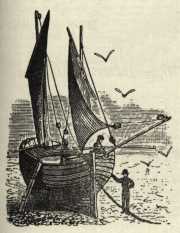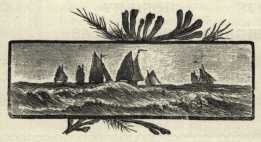The following is from [Badcock 1896] and must be read in the context of that date.
| First Page | Previous Page | Next Page |
In sending forth this work to the public we must express our great indebtedness for the valuable assistance rendered by Mr. E. Hain, Jr., by whom the chapter entitled “Historical Sketch” is contributed in its entirety. Mr. Hain is a great lover of his native town and its early history has ever been his favourite study, having spared neither time nor expense in endeavouring to unearth old documents which would tend to elucidate many historical incidents, in one notable instance Mr. Hain’s efforts were crowned with conspicuous success, as will be seen from the following pages. This document reviews the life of the town during the 16th and 17th centuries, and pours a flood of fresh light upon the history and genealogies of the town and parish, and shows the inhabitants to have been identified in a most practical manner with all the national upheavals in religion and politics, which characterised those stirring periods. Hitherto the public have not been able to gain access to this information, but these interesting records are now presented to the general reader in a form which is easily accessible.
We must also express our gratitude to Mr. H. H. Robinson for his extreme kindness in supplying the information which has enabled us to publish the article on “St. Ives as an Art Centre.”
St. IVES, cornwall,
May, 1896.

 THE St.
Ives Bay has been compared to that of Naples, and its climate
to that of the Riviera. With these sentiments we are entirely
in accord, for the visitor who views for the first time the
blue waters of this land-locked bay, fringed with a varying
belt of golden sands and purple heather, must admit it to be a
vision rarely equalled and never surpassed in the British
Isles. This subject has inspired the pen of all historians of
Cornish history, and we cannot refrain from quoting the
following eloquent words by J. S. Courtney:— “The
Terrace, constructed by the late Sir Christopher Hawkins,
Bart., and since added to the new road by Lord Wellesley, is
very pleasantly situated, and overlooks the harbour and part of
the town. Beneath it is a beautiful gently sloping beach
composed of the finest shell sand, untainted with mud, and
unmixed with pebbles or gravel of any kind; and which by every
afflux of the tide, is covered by the bright green water of the
ocean undisturbed by any current, - so transparent that at the
depth of many feet from the surface the humble flounder might
be seen reposing on his sandy bed; and at the same time
possessing a buoyant power unsurpassed by that of any other
coast. This is one of several such beaches by which the bay is
indented on this side. It is a delightful bathingplace,
equalled by very few in England.”
THE St.
Ives Bay has been compared to that of Naples, and its climate
to that of the Riviera. With these sentiments we are entirely
in accord, for the visitor who views for the first time the
blue waters of this land-locked bay, fringed with a varying
belt of golden sands and purple heather, must admit it to be a
vision rarely equalled and never surpassed in the British
Isles. This subject has inspired the pen of all historians of
Cornish history, and we cannot refrain from quoting the
following eloquent words by J. S. Courtney:— “The
Terrace, constructed by the late Sir Christopher Hawkins,
Bart., and since added to the new road by Lord Wellesley, is
very pleasantly situated, and overlooks the harbour and part of
the town. Beneath it is a beautiful gently sloping beach
composed of the finest shell sand, untainted with mud, and
unmixed with pebbles or gravel of any kind; and which by every
afflux of the tide, is covered by the bright green water of the
ocean undisturbed by any current, - so transparent that at the
depth of many feet from the surface the humble flounder might
be seen reposing on his sandy bed; and at the same time
possessing a buoyant power unsurpassed by that of any other
coast. This is one of several such beaches by which the bay is
indented on this side. It is a delightful bathingplace,
equalled by very few in England.”
The charms of the place are diversified, as from various points of vantage vistas of almost unrivalled beauty meet the gaze. From Porthminster Hill the eye travels over a wide sheet of water imprisoned on the one side by the Eastern Shore and on the other by the beautiful Porthminster beach and the picturesque old borough. Standing on the Island, looking west, the scenery is majestic, commanding, as it does, extensive views of land and sea, rugged headlands and sandy beaches. This view observed in repose on a summer day is truly delightful, and cannot fail to fill the soul of the true lover of natural beauty with feelings more akin to worship than admiration. Beneath the surrounding cliffs this magnificent expense of water lays sleeping in tranquil beauty, its tiny unsounding ripples glistening in the sun-rays, the stilly silence only broken by the wild scream of some frightened sea-bird. But should the tourist from this eminence witness Neptune in an angry mood the spectacle becomes awe-inspiring, as the huge crested billows from the Atlantic roll along and hurl themselves in relentless fury against the beetling cliffs and rock-bound coast. From the eminence of Rosewall Hill exceedingly extensive views may be obtained, and en passant, we should like to call the traveller’s attention to the Logan Rock on the eastern summit of this hill. It is not very generally known, but may be recognised by the following description. The rock is a wedge-shaped mass, decomposed on the edges, about 12 ft. long, 6 ft. wide, and 4 ft. thick at one end, but diminishing to about six inches on the other. Its weight may be estimated at twelve tons, and is easily set in motion. But the most comprehensive and varied view is to be had from the grounds of Tregenna Castle Hotel, to which we refer more fully in a succeeding page of this Sketch.
The beauty of the scenery in the immediate vicinity of the town is mainly due to its undulating nature, and from many adjacent elevations stretches of moorland, densely covered with gorse, bracken and heath, — the prevailing characteristics of Cornish scenery, — will delight the visitor’s eye. The environments of the town are very attractive, and cannot fail to interest the true pleasure seeker.
Until quite recently St. Ives was regarded as a quaintly pretty fishing village, but with the advent of the railway, and with its greater and more constant touch with the travelled public, this popular impression has almost disappeared, and it now undoubtedly ranks as the premier watering place and resort in Cornwall. Although it has made such rapid strides during late years in the direction of improved sanitation and the erection of large numbers of first-class residential villas, the older part of the town has lost none of that picturesque quaintness and irregularity of outline so sacred to the artist. The popularity of St. Ives, from an artistic point of view, appears to be on the increase, inasmuch as the numbers of the Art Colony are being annually augmented, and in another part we refer fully to the rise and progress of the community of Painters.
The climatic features of St. Ives have been very highly spoken of by medical and other journals, its hygienic conditions being most favourable to invalids and others. The historical records show its almost complete immunity from diseases, the one notable exception being the plague which visited the town in 1647. It is a proverbially healthy town, for whilst many other places have been periodically invaded and ravaged by epidemics of a severe nature the same have only been felt in this town in a comparatively slight degree. This immunity must be principally ascribed to the “natural salubrity of the air, which is remarkable. The close proximity of the ocean to either side of the town, the unobstructed passage of the delightful sea breezes over it, and the unsullied purity of its sandy beaches, conspire to render St Ives one of time most healthful and invigorating spots in England for the sojourn of inval[i]ds of all classes.” The Journal of the British Medical Association says:— “The natural resources and position of St. Ives should attract convalescents. The climate is bracing and differs in temperature six or seven degrees from the south. It is hence suitable for lung diseases and debilitated constitutions.” The Pictorial World remarks:— “St. Ives and its neighbourhood offer a most genial, warm, yet bracing climate for invalids, and this favoured position of the West of England is acknowledged by all authorities to equal Madeira, while it is within the reach of family amid friends. The beneficial changes are such as cannot be had elsewhere within so limited a space in Great Britain.” These authorities are supported by the local Medical Officer of Health, whose most recent report (1896) places the death rate amongst adults at 5.31 per 1000.

| First Page | Previous Page | Next Page |